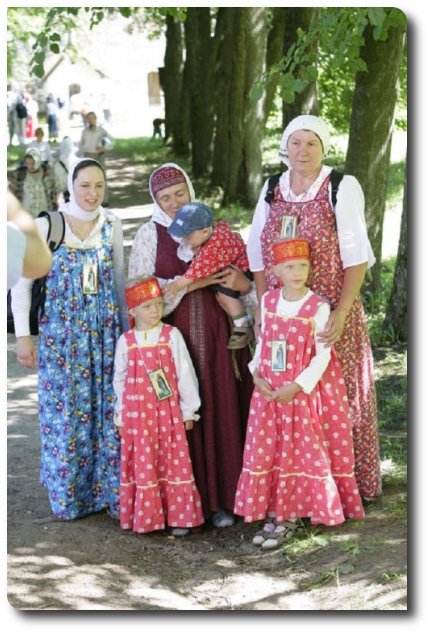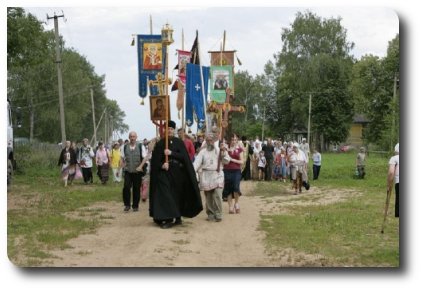![]()
Eight Rays of Orthodoxy
On Trinity Sunday, known as Pentecost, Orthodox were saddened to learn that the national football teams of Greece and Russia had on the eve been playing a football match, which had been watched by millions of baptised Orthodox. Why were they not all praying in church and preparing for one of the greatest feasts of the Orthodox Year on the morrow? The event characterises the unChristian times in which we live. Nevertheless, we know that considerable minorities in both countries were praying in church. The following report gives hope for the future, the hope that the rays of light shed by small minorities will one day create majorities, as of old.

Recently eight religious processions converged on Moscow. Blessed by His Holiness Alexis II, Patriarch of Moscow and all the Russias, they were sponsored by the international spiritual educational programme ‘Under the Star of the Mother of God’. The processions were dedicated to the commemoration of the restoration of the unity of the Russian Orthodox Church.
Marchers would meet at supply points in the morning and discuss their plans for the day’s march, making a rough estimate of how far they would travel under the protecting canopy of the Wonder-working Sovereign Icon of the Mother of God, their Protectress from all misfortune. Some of the pilgrims had been on the road for over a year. Believers from Vladivostok had been marching since May 2007, and a month later, pilgrims from Yakutsk had begun their trek to Moscow. In 2008, six additional processions set off, from Sebastopol, Baranul, Rostov-on-Don, Athos, St Petersburg, and Arkhangelsk. In all, this made up eight separate processions. That is how many rays there are in the star of the Mother of God. The copies of the Sovereign Icon of the Mother of God carried by the various contingents had been made specifically for the pilgrimage. In Sebastopol, the icon came to the marchers from Jerusalem. Taking into account the distance that had to be covered, with all the good will in the world, marchers could not accept all those who wished to go with them. In Sebastopol, the core of the group was some forty people. The oldest pilgrim was Nikolai Vinogradov, who is 72 years old.

Pilgrims saw many signs on their march. In Kursk, a rainbow appeared over the Cathedral of St Sophia. It was amazingly bright and very round. Pilgrims walked at a brisk pace, carrying banners and the most important holy shrine, the Icon itself. Pilgrims said that if they tried to carry the Icon at elbow level, it moved, seemingly by itself, to a position above their heads. This was considered to be a very good sign. Everyone said that people experienced inexpressible sensations of the Divine and Paradise and felt the intercession of the Most High as they did so.
The marchers carried only the absolute minimum of supplies with them, such as sleeping-bags and canteens for drinking water. Most of their supplies were carried in two cars which followed them. When they stopped for the night, they slept in schools, monasteries and halls, in other words, they took what was on offer. Nevertheless, it did not bother them in the slightest, for they considered that it was God’s gift to be on the pilgrimage at all.
All eight pilgrimages met in Kolomna outside Moscow. From there they processed together to the Cathedral of Christ the Saviour in the centre of Moscow. Patriarch Alexis led the service and he reminded them all that it was precisely in that Cathedral, one year ago, that the Act of Canonical Communion was signed, reuniting the Russian Orthodox Church. The Patriarch said: ‘Russia in exile yearned for this event for 80 years. The disordered conditions created by the Revolution and Civil War forced many of our compatriots to flee the motherland and to settle under adverse conditions in new homes abroad. At the same time, the Church in Russia had to tread a difficult path. We suffered repression and persecutions. The Host of the New Martyrs proved their faithfulness to Christ by standing up for the Faith and accepting martyrs’ deaths’. Surrounding His Holiness were over four thousand pilgrims from the eight processions and the faithful who had joined them in Moscow.